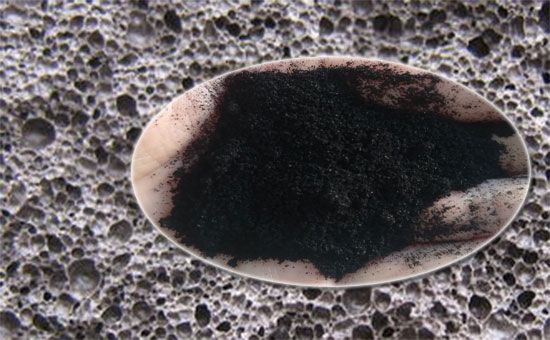
Foamed concrete, namely lightweight concrete, foamed cement, and foamed concrete, is made by mixing foaming agent, cement, fly ash, stone powder, water, etc. as the main materials. The interior contains uniform pores and is used in the roof insulation cushion and ground It has a wide range of applications such as thermal insulation cushion, filling of foundation pits of upturned beams, and wall casting. Mixing a certain amount of waste tire rubber powder into the foamed concrete can not only solve the pollution problem of some waste tires, but also further improve the physical properties of the foamed concrete.
1. The role of tire rubber powder in foamed concrete
Foamed concrete is uniformly porous, light in texture, and has excellent thermal insulation, sound insulation, and fire resistance properties. In actual production, the water-cement ratio of traditional foamed concrete is generally above 0.5, and it is easy to lose a large amount of water during setting and hardening. The concrete shrinks and deforms and even cracks during use, which seriously affects the insulation and frost resistance of concrete. Appropriate use of waste tire rubber powder in foamed concrete can significantly improve concrete crack resistance, frost resistance, impact resistance, toughness, etc., and reduce concrete brittleness and water absorption.
2. Tire rubber powder affects the performance of foamed concrete
The amount of tire rubber powder will affect the dry density, porosity, water absorption, crack resistance and tensile strength of foamed concrete. After the amount of rubber powder gradually increased, the dry density, porosity and water absorption of foamed concrete 2LLYY108 gradually decreased, and the concrete cracking time was significantly prolonged.
The particle structure of tire rubber powder does not participate in the hydraulic hydration reaction, and mostly exists between the pore walls, resulting in a transition zone between the tire rubber powder and cement stone, the concrete structure is loose, and the strength of foamed concrete is reduced. Since tire rubber powder with an inert surface cannot participate in the hydration reaction, the overall hydration reaction rate decreases, and the setting and hardening process of the foam concrete is delayed. Under the action of buoyancy and other forces, the bubbles in the concrete will diffuse into the large bubbles, and then the large bubbles will increase; when the stress of the concrete is concentrated on the large bubbles during the compression process, it is easy to crack. The compressive strength is reduced.
3. The amount of tire rubber powder in foamed concrete
Comprehensively the positive and negative effects of waste tire rubber powder on foamed concrete, the amount of tire rubber powder in foamed concrete should be controlled in the actual application process, generally not exceeding 9%, which can improve the crack resistance, toughness and resistance of foam concrete It also avoids the decrease of concrete strength while freezing.
Exclusive original article [commercial authorization] reprint, excerpt and excerpt in any form are prohibited without written authorization. Focus on Hongyun rubber: learn the process formula and raw material technology of producing rubber products from recycled rubber to help you reduce costs and increase profits